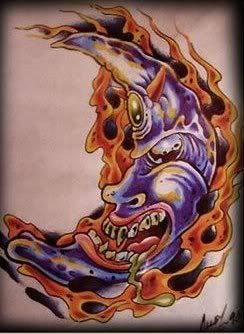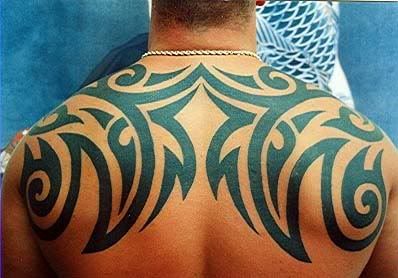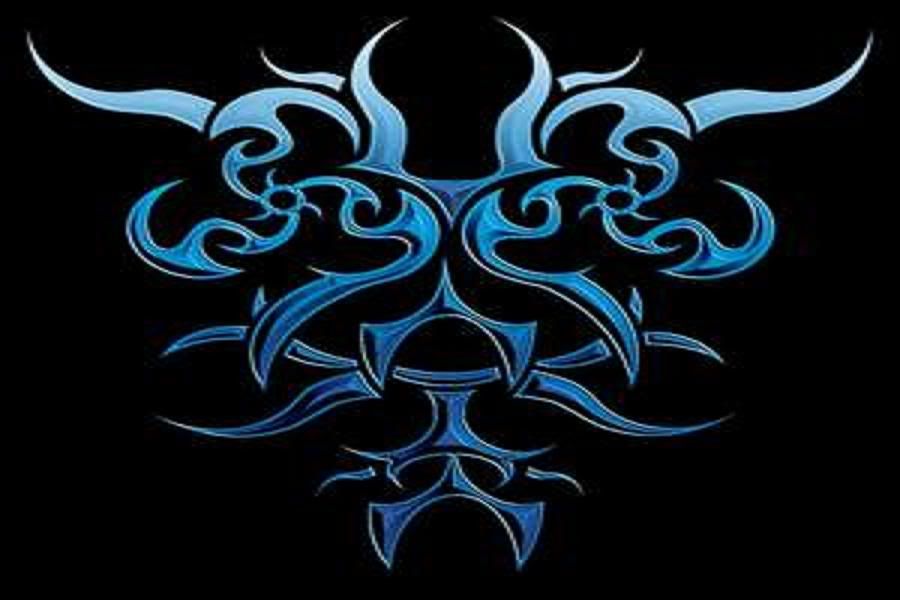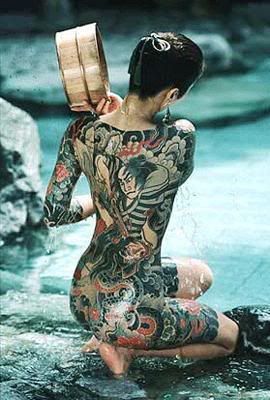|
|---|
Thursday, January 24, 2008
Tribal Tattoo
Tribal tattoo designs are probably one of the most popular forms of tattoos in the world. These are generally known as designs traditionally used in the Pacific Islands and Africa.

Cultures who employs this tattoo style did not get them because they looked cool. They got them because they believed there was a certain power attached to the tattoo. Some tribes use elaborate tattoo designs as a way to signify a boy becoming a man and outcast those who are not willing to take part in this tattooing tradition. Other use them as protection in battle or as a signal of great warriors.
Tribal tattoos are recognizable by their dramatic use of aggressive dark lines in jagged symmetrical shapes spread throughout the skin. Tribal tats are most often done in simple black and skin tones but in the western world they are often infused with color to enhance the overall look. Whereas other tattoo styles attempt to represent a specific object, tribal tattoos seem far more concerned with the feel and meaning rather than what it specifically looks like.
Typical examples of modern tribal tattoo designs are arm or leg bands that seem to have become the most popular tattoo design over the last 5-10 years. These designs are typically only black but many artists have been using subtle shading or even inclusion of a less abstract design such as butterflies or dragons within a tribal design.
source: http://www.tattoopictureshop.com/tattoo-designs/tribal-tattoo.html
Friday, January 18, 2008
Japanese geisha
The Japanese geisha
In modern Japan, geishas have been transformed into symbols of traditional values. In the west, the geisha has become a symbol of the exotic grace and beauty of the East. In this tattoo design, the wind has ruffled her kimono and set some pieces of paper loose, perhaps from the sheaf tucked near her arm. The wind has also loosed some petals of cherry blossoms which are beginning to swirl past her. They echo the cherry blossom design of the lower part of her kimono while the upper part makes use of the chrysanthemum. Both flowers are frequently used in Japanese art and in Japanese tattoos.
Japanese geisha
The Japanese geisha
In modern Japan, geishas have been transformed into symbols of traditional values. In the west, the geisha has become a symbol of the exotic grace and beauty of the East. In this tattoo design, the wind has ruffled her kimono and set some pieces of paper loose, perhaps from the sheaf tucked near her arm. The wind has also loosed some petals of cherry blossoms which are beginning to swirl past her. They echo the cherry blossom design of the lower part of her kimono while the upper part makes use of the chrysanthemum. Both flowers are frequently used in Japanese art and in Japanese tattoos.
Japanese Dragon Tattoo Design
Japanese Dragon Tattoo Design
This dragon has its mouth closed, in a less aggressive stance. It also clutches in one of his claws an object that is variously shown as a ball, a pearl, or a jewel. This item is essentially the closed-lotus form seen in various Buddhist designs including temples and grave markers
Japanese Backpiece Tattoo

Japanese Backpiece Tattoo
The body of the dragon directly connects with the cherry blossoms and wind at the upper left. The clutched pearl of wisdom takes up a place of some prominence at the upper right, providing balance to the design. The lower body of the dragon tattoo now loops downward and to the left while the tale finally ends downward and to the right, somewhere on my upper thigh.
Traditional Japanese tattoo
Japanese tattoos are known for their full body styling, bold lines, historic patterns and traditional images. The techniques for tattooing that developed in Japan used hand tools, and it wasn’t until the mid 20th century that machines first came to Japanese tattooing.
Incredibly popular are the Tattoo Contests, which will be held in various categories such as black and grey, best small piece, best large piece etc., where visitors take part in an exciting competition in which art and fun are the real winners.
On September 21st to September 23rd of 2007, Starlight Tattoo will be accompanied by world famous tattoo artists at the Meadowlands Exposition Center! THIS IS THE ULTIMATE TATTOO EVENT OF THE YEAR! Covered by every trade magazine world wide! News & Radio coverage. Celebrity appearances! Vendors from clothes to tattoo supplies, piercing supplies, accessories, and merchandise. Doctors for laser tattoo removal, Seminars in Art-History and Law of Tattooing. Contests all weekend long! HENNA ARTISTS, T-Shirt designers, SOMETHING FOR EVERY BODY.
The Times reported that “The traditional show on the Tattoo” was very much in evidence as middle-aged rockers of both sexes mingled with a new, younger breed of heavy metal fans, but amid the throng of Motorhead and Anthrax T-shirts were dozens of stylishly dressed young women, many of them sporting large, but beautifully crafted, Oriental tattoos. The trend for bold statements rather than cute little hearts and butterflies appears to be growing as one in eight Britons are now estimated to carry this particular form of adornment.
Hori Toshi is one of the greatest hand tattooing masters of all times. So do not miss this rare opportunity to see this master working in traditional Japanese style on the East Coast! Japanese tattoo is called “irezumi” or “horimono” in Japanese.
In Japan, tattoo is usually considered to be a symbol of a yakuza and tends to be perceived negatively by people. For example, many public bath facilities in Japan inhibit customers who have tattoos from entering. Traditional Japanese tattoo covers arms, shoulders, and the back. In recent years, it’s becoming popular for Japanese young people to get contemporary tattoos.
source: http://www.wayfaring.info/2007/05/30/traditional-japanese-tattoo-show/




























































